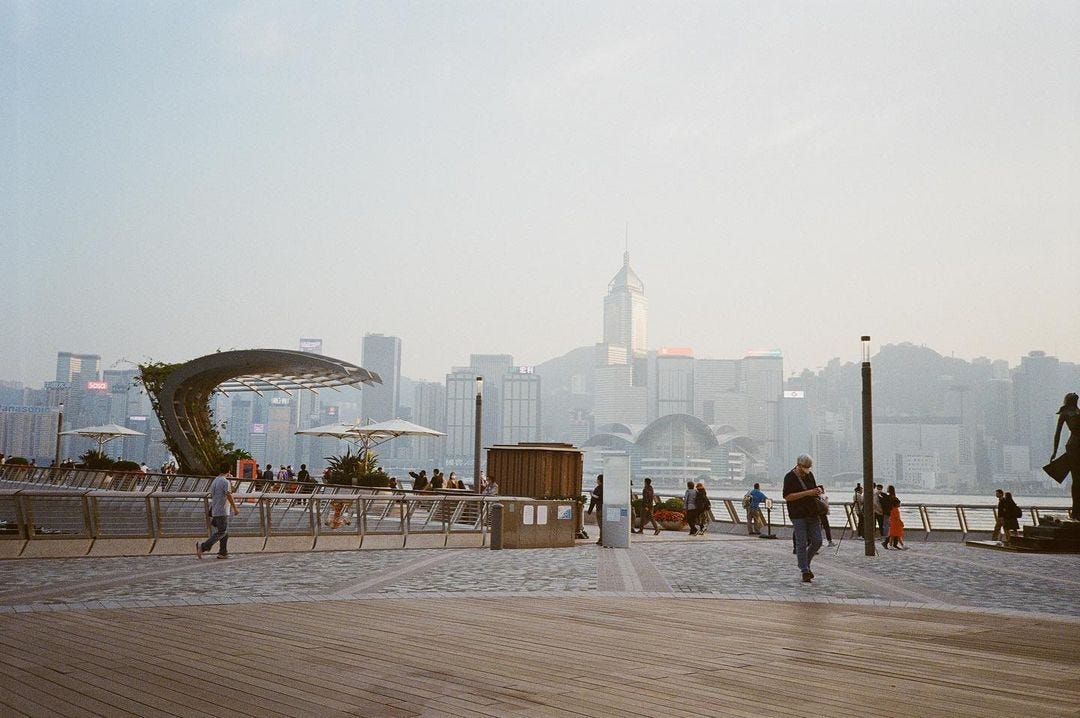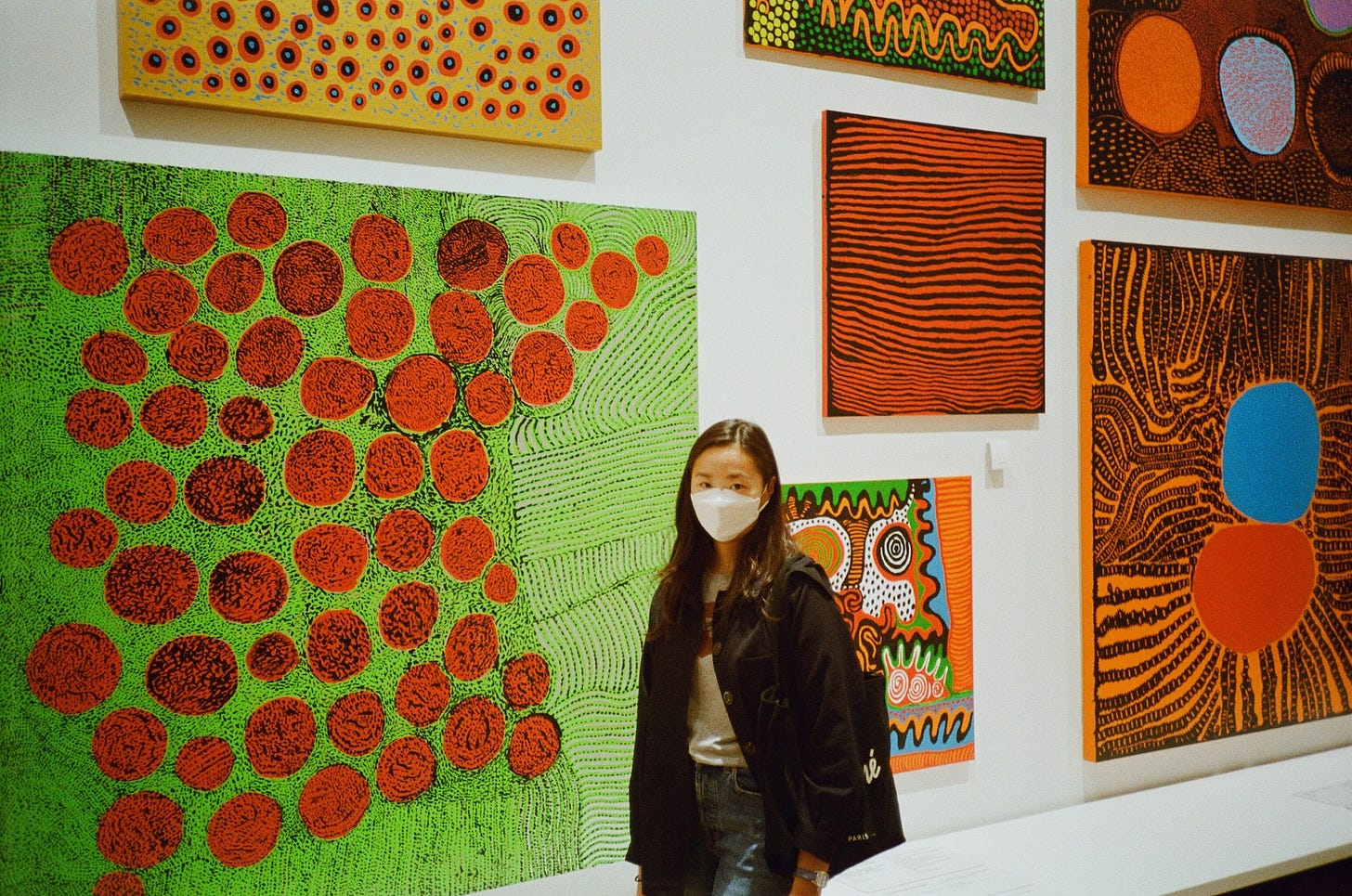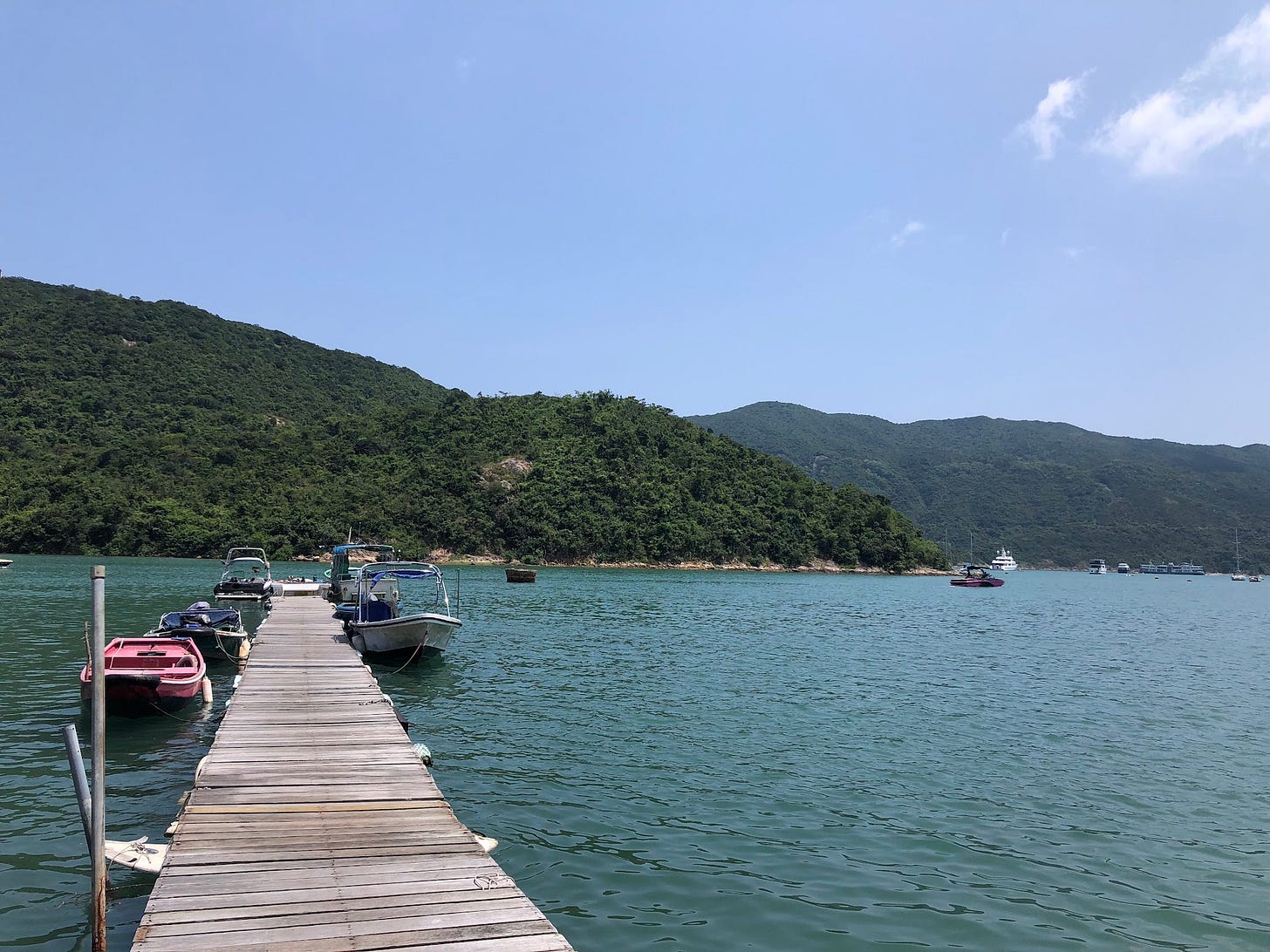*updated January 2025*
Indulge me with a short foreword before we begin…
For people of colour born and raised in the West like myself, identity is likely to be something that one wrestles with for years to follow. For me, that identity has always been indelibly split between what I believe to be two of the world’s greatest cities - London and Hong Kong.
As a child, visiting Hong Kong every year during the sticky, suffocatingly hot summers served as a vital touchstone for the Chinese part of my identity. The poetically descriptive names of places within the city - Diamond Hill, Happy Valley, Causeway Bay - never failed to capture the imagination of my younger self. Even the name of Hong Kong itself - fragrant harbour - still conjures up exotic images of a land full of promise and beauty for me.
My annual pilgrimage to my second home has endured into adulthood, and whilst it has undergone significant and often tumultuous change over the years, it has always, and will continue to always occupy an untouchable and large space in my heart, come what may.
It is therefore with great pride and perhaps melodramatic emotion that I present to you my city guide for Hong Kong.
What to know before coming:
History: Hong Kong was a British colony for over a century until it was handed back to China in 1997. Despite China’s recent efforts at further assimilation, Hong Kong remains distinct from the mainland in many ways - a different legal system, language, currency and passport, to mention a few. Whilst China agreed to let such distinctions stand until 2047, many Hong Kongers feel that the civil liberties they have historically enjoyed by virtue of the region’s special status (e.g. freedom of speech, lack of Internet firewall) are being prematurely eroded.
Language: It is a common misconception that “Chinese” is one monolithic language. In fact, Chinese comprises hundreds of mutually unintelligible dialects, each with their own grammar structures and vocabulary. Cantonese is one of the most widely spoken and is the primary language used in Hong Kong, but English also remains as an official language, and most Hong Kongers are therefore trilingual in Cantonese, Mandarin and English.
When to visit: The only off-limits time in my mind is summer (May until August inclusive) when the city gets unbearably humid and thunderstorms / typhoons are commonplace. For me, my favourite time is winter / spring - you can properly enjoy hiking in Hong Kong from November until April inclusive without feeling like you’re in an oven.
Getting around: Hong Kong is luckily not very large and has an excellent range of transport options. You will definitely want to get an Octopus card, which is a contactless card that can be loaded up with money and used to easily pay for transport, food, shopping… nearly everything! Physical Octopus cards can be bought at any MTR / subway station, or you can download the Octopus app to add one to your Apple Wallet.
The only notable exception to Octopus card usage are taxis, which are cash-only for those hailed off the street. Ensure you have the address in Chinese for the driver just in case, and be prepared for some questionable pedal-to-the-metal driving.
Food: To provide some context for my Restaurants section below - Hong Kong diners, or cha chaan teng (CCT) are one of the city’s most iconic institutions. These bastions of Western - Chinese fusion cuisine have been serving up macaroni soup, silky scrambled eggs and thick French toast stacks for decades, and you won’t be able to try this food anywhere else but Hong Kong. Do not expect anything in the way of service at CCTs - the waiters are infamously impatient and gruff, and you are expected to eat efficiently and not dawdle to make way for more hungry diners looking for a quick, cheap meal.
Hong Kongers also love their desserts, which usually resemble some kind of sweet soup or set pudding. Modern variations are usually fruit based and have various toppings such as coconut jelly and mochi. This may seem very foreign to Westerners who would think of cakes or tarts when dessert is mentioned, but this is something I have to have every day when in Hong Kong - the perfect refreshing way to end a meal.
*asterisks denote my personal favourites
Restaurants:
Don’t be put off by the Google ratings - I’ve found that these are more often than not inaccurate. Hong Kongers tend to use OpenRice as their primary food review app.
Chinese / Dim Sum:
Flower Drum (Wan Chai) - delicious Cantonese cuisine. Their baked pork cutlet rice (a classic Hong Kong dish) is still the best I’ve ever had.
Tim Ho Wan (multiple branches) - dim sum chain headed by a Michelin-starred chef.
Tin Lung Heen (West Kowloon) - if you want to really impress someone, or treat yourself to Michelin-starred dim sum with a spectacular view.
Kam Tung Kitchen (Shau Kei Wan) - delicious and unique Cantonese seafood dishes.
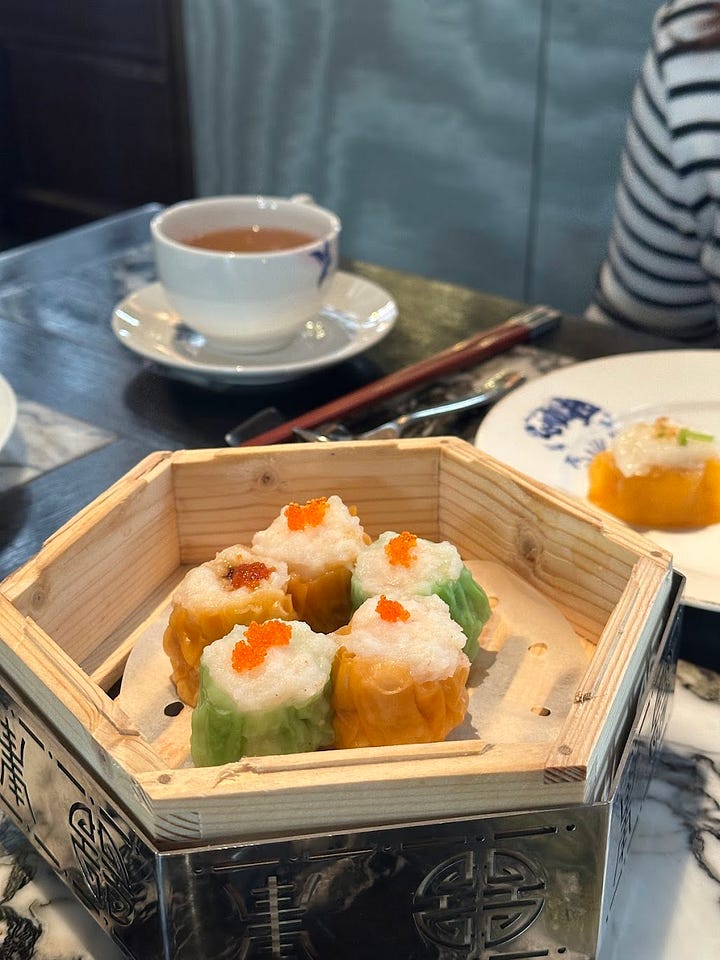
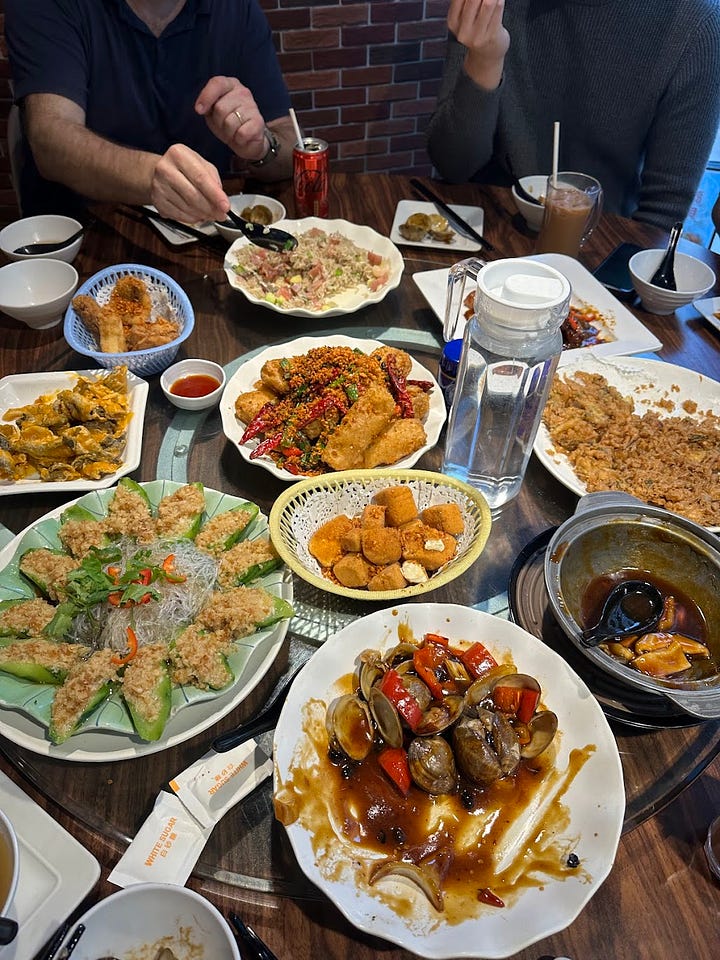
The Chinese Library* (Central) - creative and upscale dim sum in Tai Kwun - the perfect place to take your parents.
Ship Kee (Wan Chai) - has a Michelin Bib Gourmand award in recognition of its delicious char siu (honey barbecued pork), but don’t miss their other dim sum dishes - the cheung fun in particular is excellent.
Mui Kee Cookfood Stall (TST) - for a truly authentic culinary experience in Hong Kong, eat at a dai pai dong (food stall). This one is indoors and specialises in fantastic seafood dishes - don’t miss the salted egg yolk fried fish skin or oyster pancake.
Liu Yuan Pavilion (Wan Chai) - Michelin starred Shanghainese cuisine - don’t miss the luxuriously creamy hairy crab roe, or the sautéed crystal shrimp.
CCTs:
Australia Dairy Company (Jordan) - probably the most famous CCT, and it has an English menu, but be prepared to queue and be rushed out of the door.
Kam Fung (Wan Chai) - a true local CCT experience, complete with brusque waiters. Don’t leave without trying their chicken pie pastry. Chinese menu only.
Cheong Kee (Happy Valley) - famous for its thick fluffy toast, best enjoyed smeared with peanut butter and condensed milk. Chinese menu only.
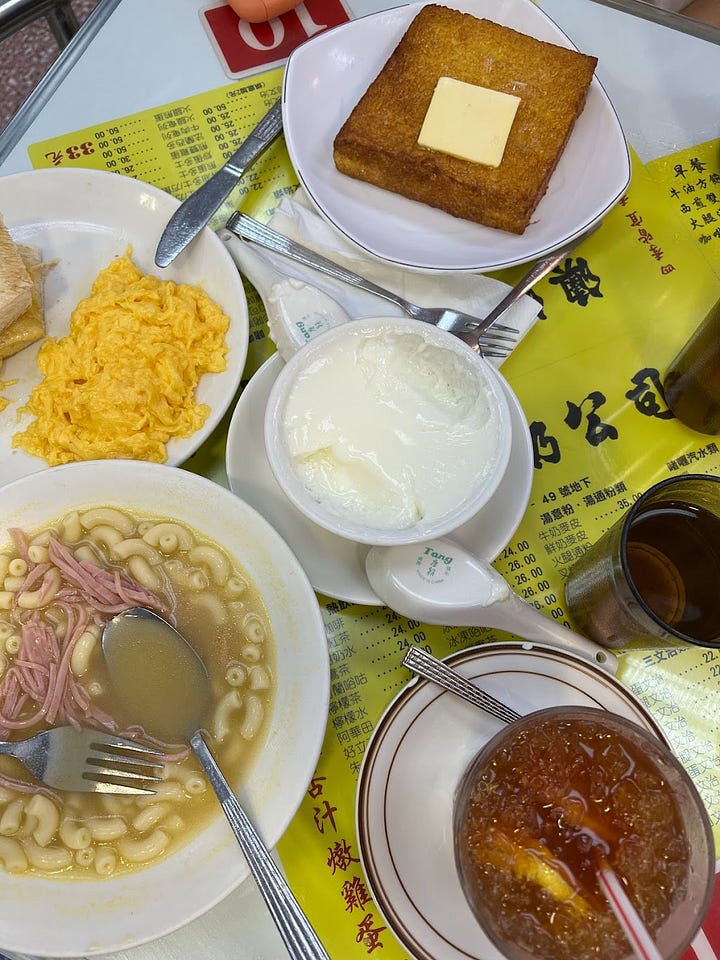
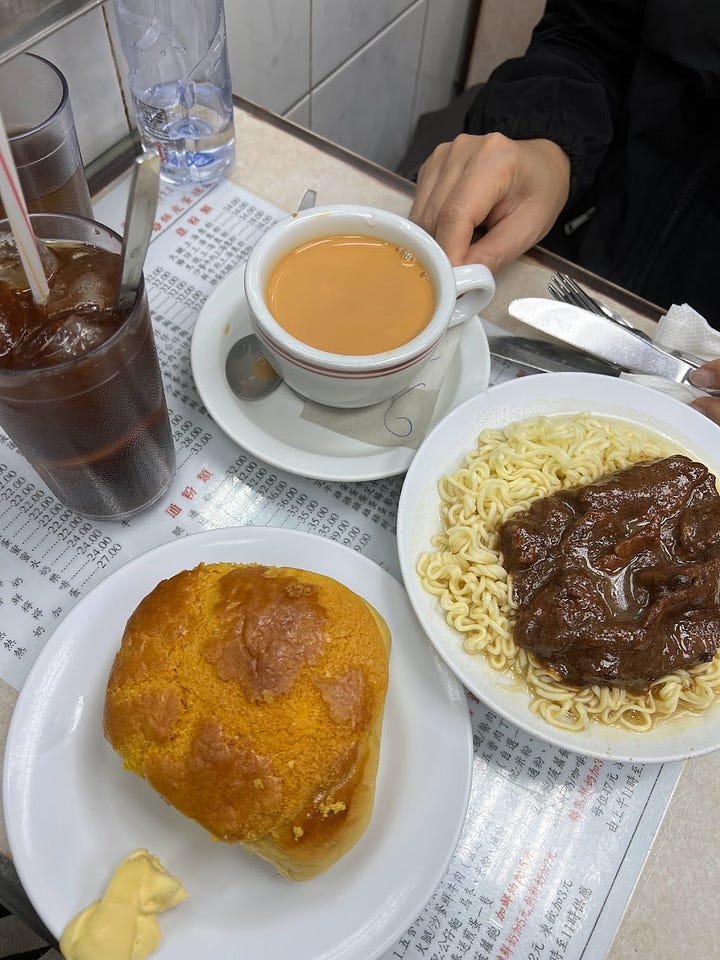
Capital Cafe* (Wan Chai) - just a really bloody good CCT with an English menu. Can’t go wrong with anything from here.
My Cup of Tea (Wan Chai) - not much space to sit, but their scrambled egg sandwiches are impossibly soft and pillowy.
Japanese:
Uoharu* (Admiralty / Central) - creative and delicious Japanese izakaya-style small plates. My whole family loves this place.
To To Ya (Causeway Bay) - I have been coming here for years and it never disappoints. Excellent sushi at affordable prices.
L.D.K. by Ufufu Cafe (multiple branches) - I absolutely love the yoshoku (Western-Japanese) dishes here, especially the pasta.
Hanagushi Yakitori (Central) - the menu can be overwhelming because it has so much to offer, but everything here is executed to perfection and I particularly like how generously sized the sushi is.
Gonpachi (Causeway Bay) - refined and delicious izakaya food in atmospheric and immersive surrounds.
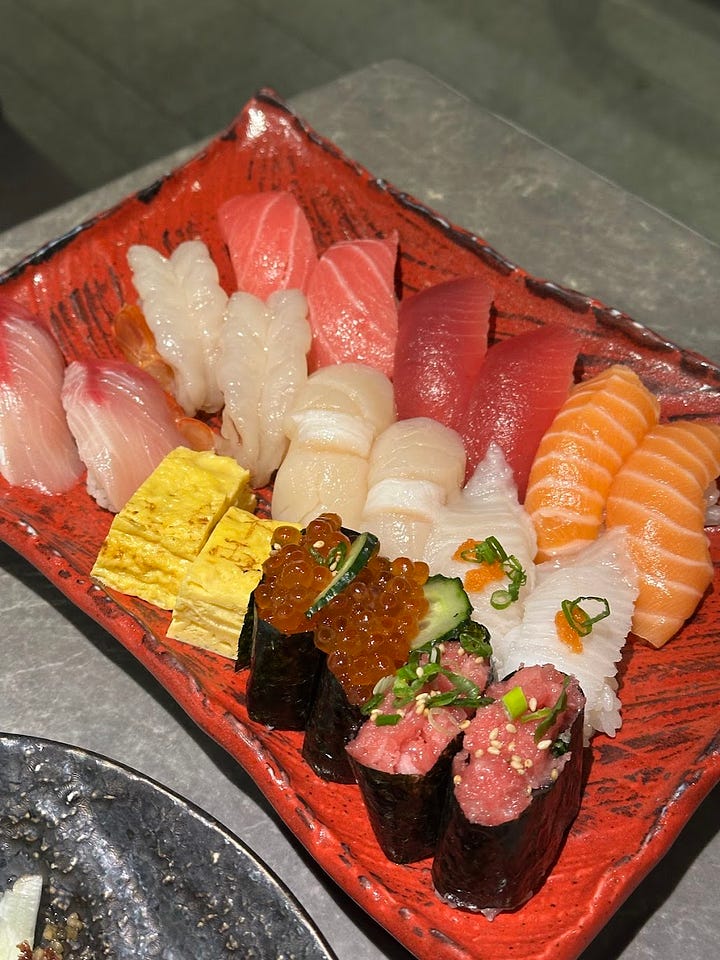
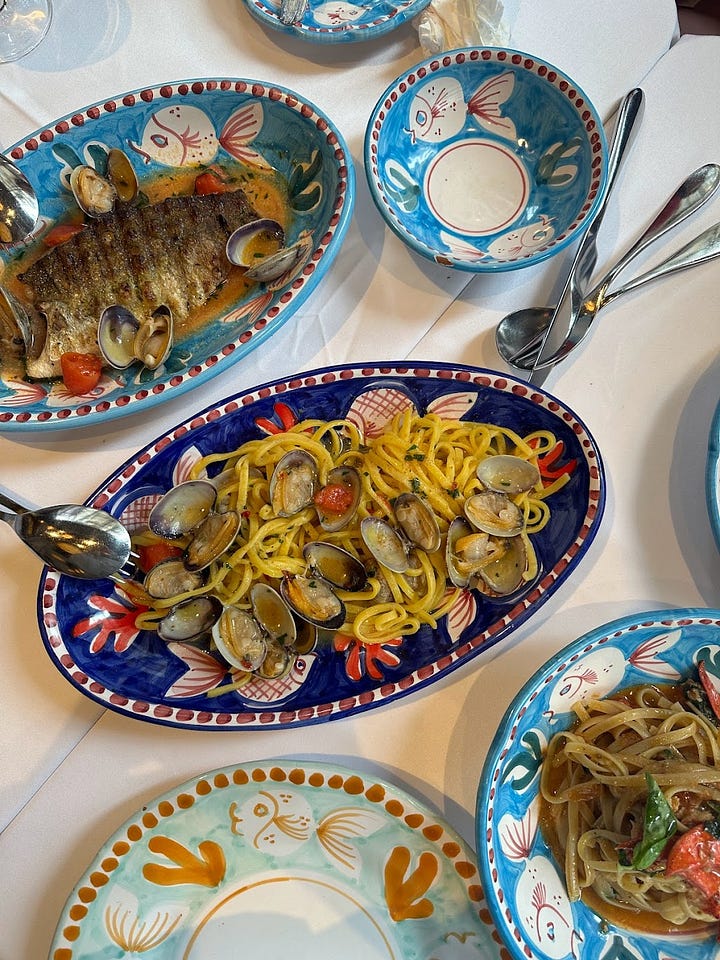
Sen-Ryo* (multiple branches) - a popular chain restaurant from Japan that serves high quality sushi at mind-bogglingly affordable prices.
Kyoto Joe (Central) - located right in the heart of Hong Kong’s nightlife district, this elegant restaurant puts you among the skyscrapers and offers a whole spectrum of Japanese food.
Choubo Kissaten (Causeway Bay) - another great yoshoku pick, with their crab pasta being our favourite when we visited.
Western:
Osteria Marzia (Wan Chai) - Italian seafood pasta restaurant based in a maritime-themed boutique hotel.
Pici (multiple branches) - for freshly made pasta that really hits the spot.
Caprice (Central) - located in the Four Seasons, this three Michelin starred fine dining restaurant never misses with its exquisite contemporary French cuisine.
Cafés, snacks & dessert:
Ching Ching Dessert (Wan Chai) - traditional Chinese-style desserts. A Hong Kong icon.
So Coco* (Causeway Bay) - completely vegan, coconut-based desserts and ice cream - absolutely delicious.
Shari Shari Kakigori (multiple branches) - the most delicate, picture perfect Japanese-style shaved ice to cool you down on a hot day.
Mammy Pancake (multiple branches) - you can find their famous egg waffles all over the city.
Via Tokyo (Causeway Bay) - specialises in matcha desserts, from soft serve ice cream to parfaits.

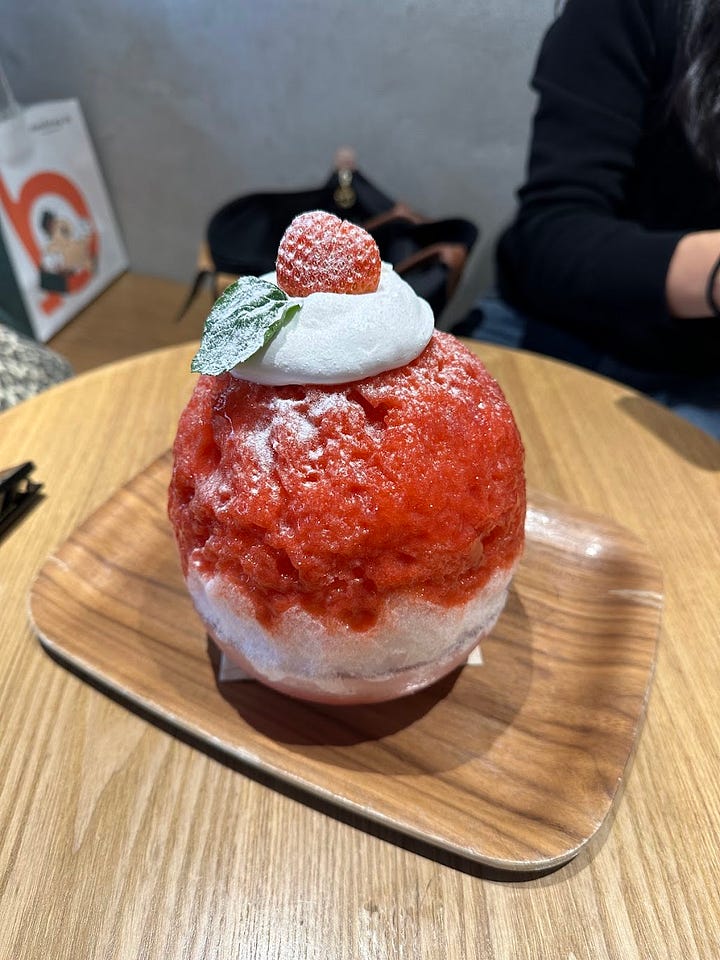
Matchali (Wan Chai) - a wonderful cafe dedicated to all things matcha in the Starstreet Precinct.
Bakehouse (multiple branches) - has branches all around the city. Legendary sourdough egg tarts.
Icegreen (Causeway Bay) - ingenious mochi desserts topped with your choice of fruit / jelly / shaved ice. My favourite is the mango pomelo icegreen shaved ice.
Cong Dessert* (Wan Chai) - extremely popular dessert shop which often has queues coming out the door, but you’ll be served quickly if you’re on your own. Either way, the wait is worth it.
Yee Shun Milk Company (multiple branches) - the “double skin” chilled milk pudding is one I can’t resist, even as someone who is severely lactose intolerant.
Bars & entertainment:
DarkSide (TST) - located in the beautiful Rosewood Hotel, this dark and sexy cocktail parlour has live jazz and sweeping views of the harbour.
The St. Regis Bar (Wan Chai) - as you’d expect, this is a very highbrow bar for a special occasion, but its wonderful outdoor terrace is the perfect place to enjoy a drink (or a cigar) on a warm summer evening.
Gokan (Central) - the bar’s philosophy is in its name, which means “five senses” in Japanese. Each of their gastronomic cocktails and food items are designed to create an immersive sensory experience.

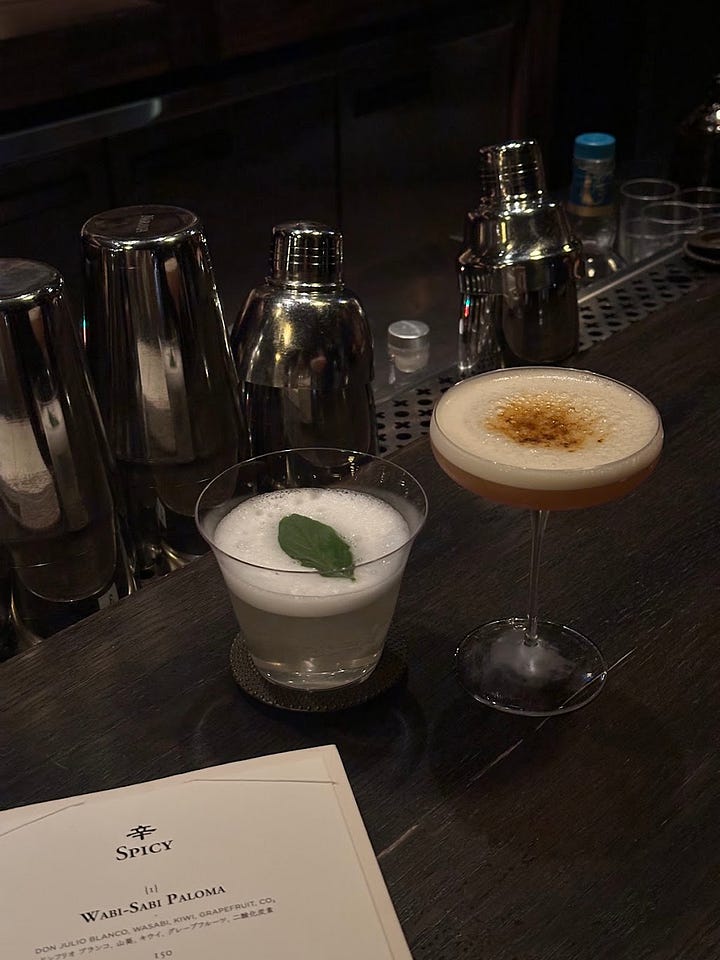
RedMr (multiple branches) - while their karaoke systems aren’t the most modern or sophisticated, their prices are affordable and there are branches all over the city.
The Iron Fairies (Central) - this beautiful live music venue marks the beginnings of all great nights out.
Lost Hong Kong* (multiple branches) - Hong Kongers love an escape room, and Lost is one of the best places to try one with friends.
Museums:
M+* (West Kowloon) - modern and contemporary art museum with an enviable roster of exhibitions. I particularly love the Sigg Galleries on 2/F that showcase Chinese art through the lens of modern history.
Tai Kwun* (Central) - former prison now converted into an array of restaurants, bars and art exhibitions, as well as exhibits explaining the complex’s history.
JC Contemporary (Central) - right next door to Tai Kwun.
Hong Kong Palace Museum (West Kowloon) - artefacts from the Forbidden City, beautifully presented.
Hong Kong Museum of History (TST) - houses an excellent permanent exhibition on the history of Hong Kong, but this is still undergoing major renovation as of January 2025. Free entry.
Hong Kong Heritage Museum (Sha Tin)- dedicated to preserving and celebrating Hong Kong pop culture, from Cantonese opera to movie stars and singers of my parents’ generation. A trip down memory lane. Free entry.
Asia Society Hong Kong Center (Admiralty) - historic former explosives magazine now plays host to highbrow events and art exhibitions. The roof garden is particularly lovely. Free entry.
Places of worship:
Chi Lin Nunnery* (Diamond Hill) - the nunnery is an exquisite example of Tang dynasty architecture, which inspired many of Japan’s most beautiful sites. The adjoining garden is an oasis in the city that you shouldn’t miss.
Po Lin Monastery / Tian Tan Buddha* (Lantau Island) - located in Ngong Ping Village, which makes for a fantastic day trip. The monastery is gorgeous and the giant Buddha is one of Hong Kong’s most iconic sights.
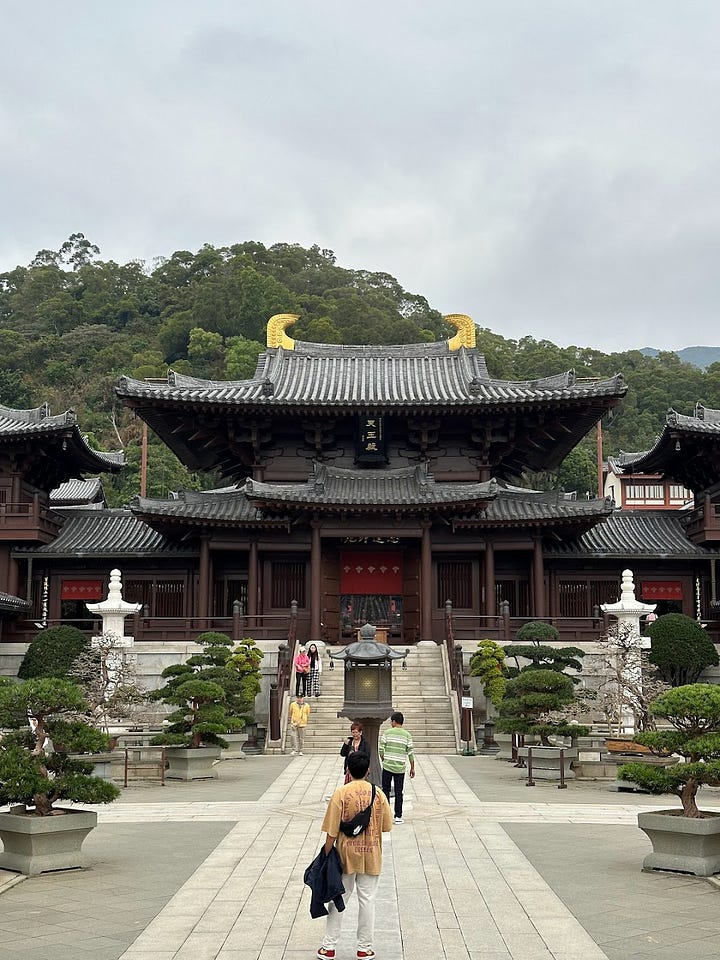
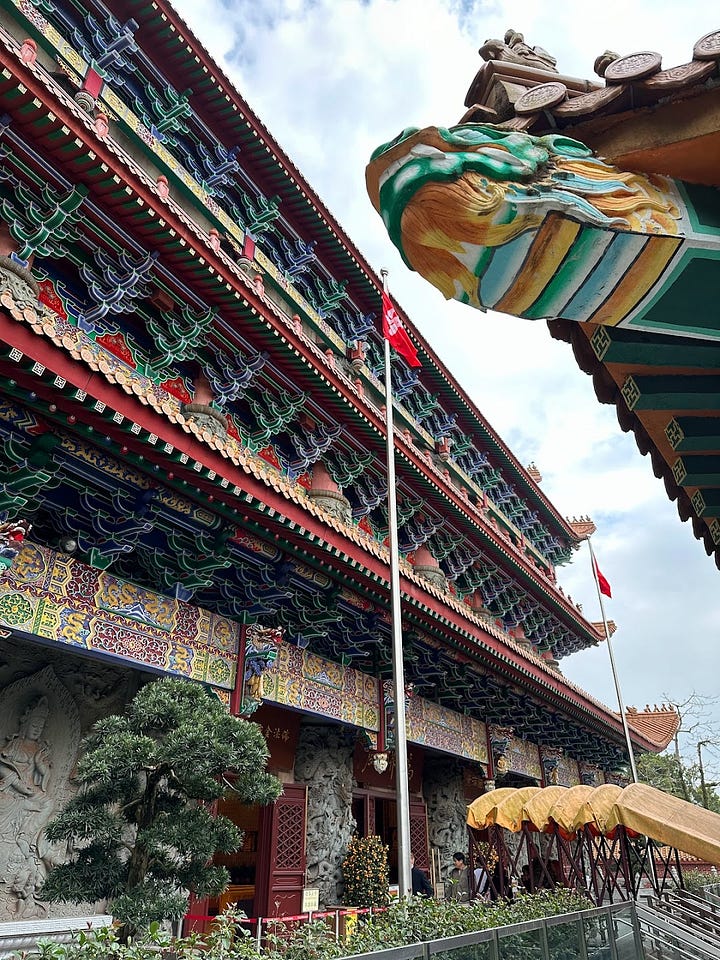
Wong Tai Sin Temple (Wong Tai Sin)
Man Mo Temple (Sheung Wan)
Ten Thousand Buddhas Monastery (Sha Tin) - requires hiking up a steep hill.
Parks & gardens:
Nan Lian Garden* (Diamond Hill) - adjoins the Chi Lin Nunnery. Both of them are must-sees!
Tamar Park (Admiralty) - leads onto the Central and Western Promenade, offering sweeping views of Victoria Harbour.
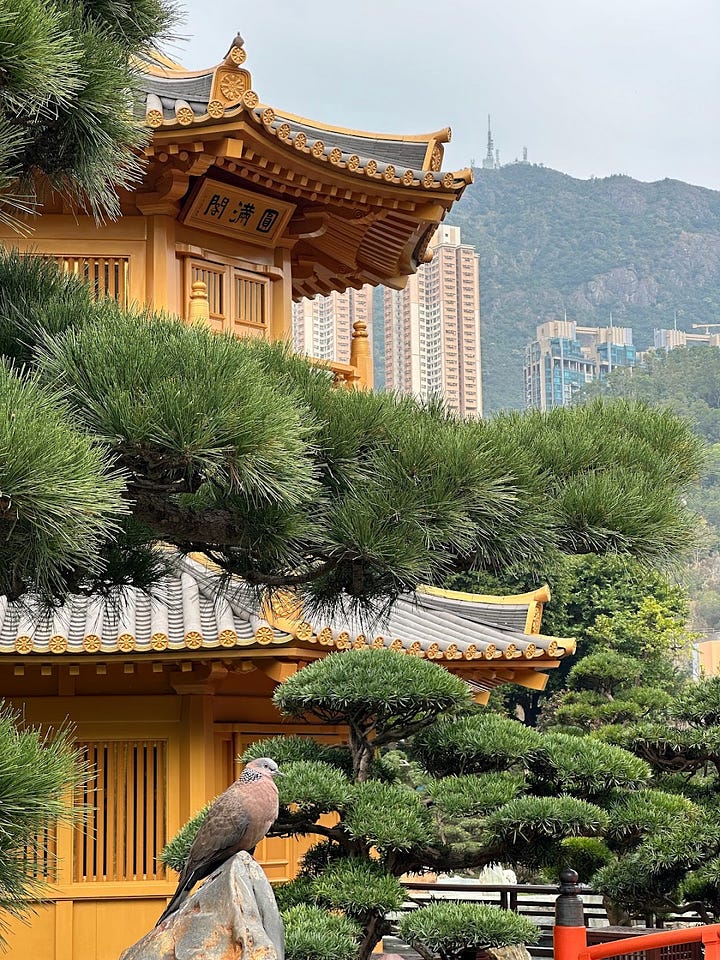
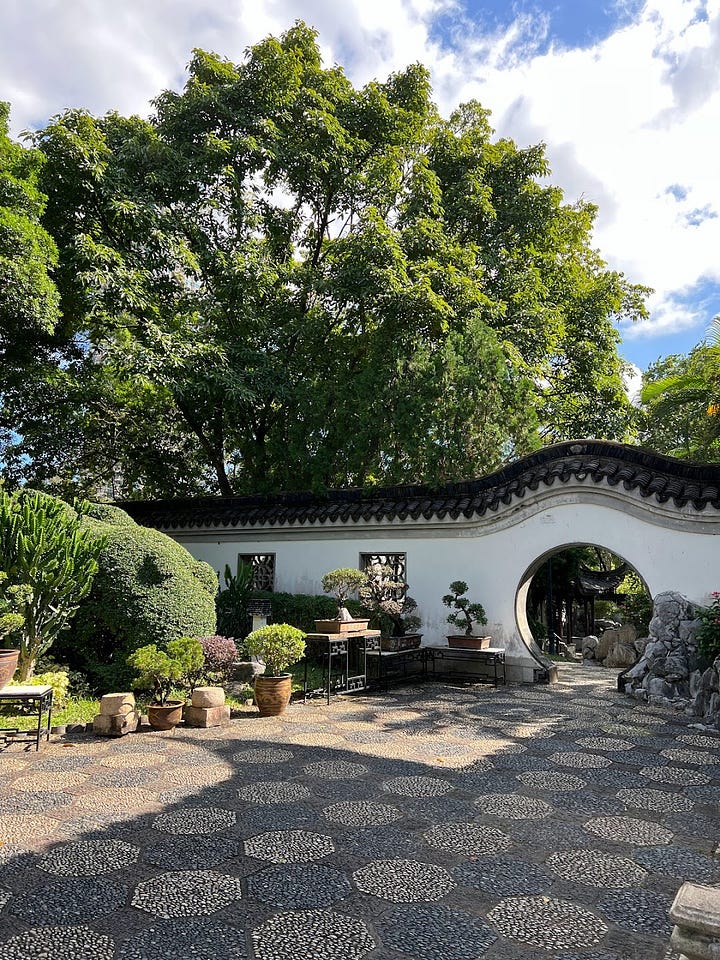
Kowloon Walled City Park (Kowloon City) - gorgeous Qing dynasty-style gardens.
Hong Kong Park (Admiralty)
Shopping:
Malls:
K11 Musea* (TST) - part art museum, part luxe shopping mall. The waterfront / Avenue of Stars outside makes it one of my favourite places to visit.
PMQ* (Central) - a vast collection of independent boutiques and galleries housed in former police quarters, a stone’s throw from the hustle and bustle of Central.
Hysan Place (Causeway Bay) - home to my favourite bookstore, Eslite Books (see below)
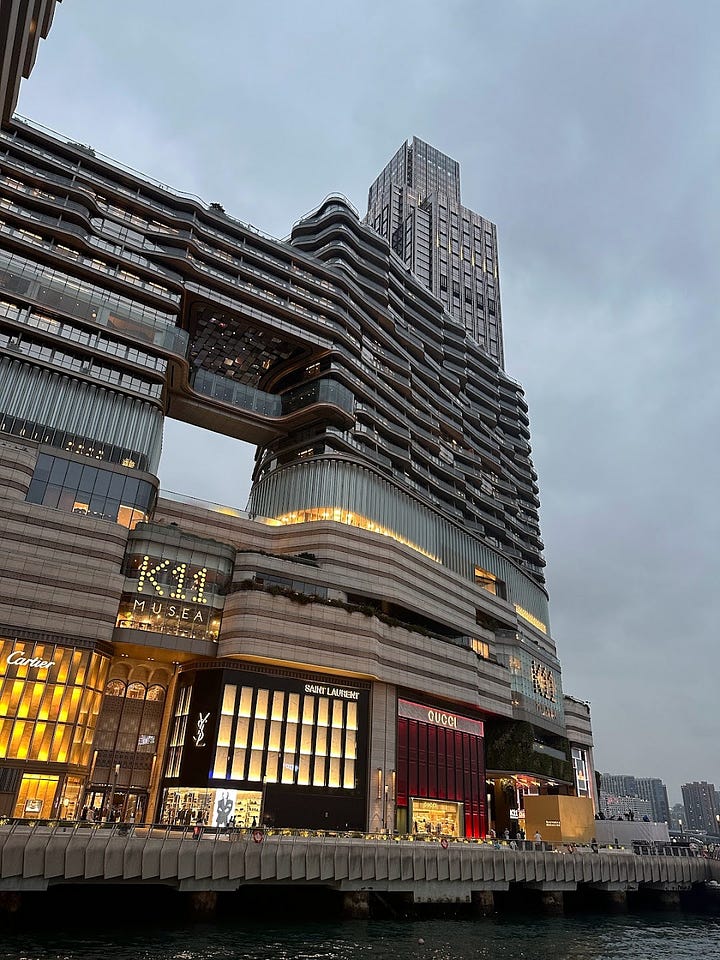
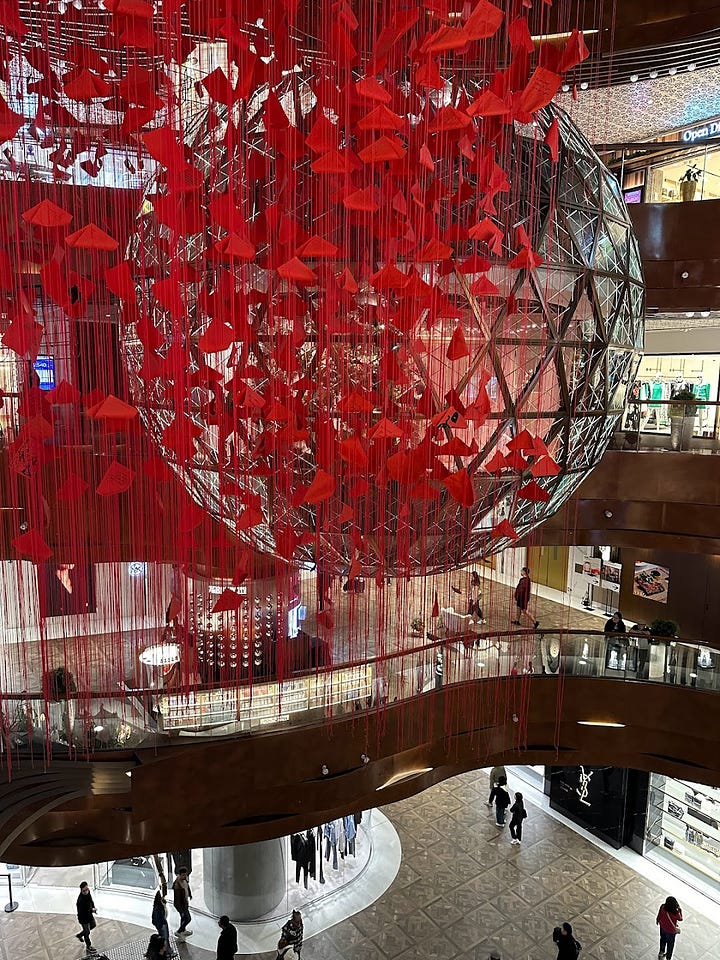
IFC mall (Central)
Pacific Place (Admiralty)
Festival Walk (Kowloon Tong)
Cityplaza (Tai Koo)
Individual shops:
Eslite Books (Causeway Bay) - a multi-storey bookstore in Hysan Place where I could happily spend a day browsing and reading.
HULA (Central/Quarry Bay) - sells amazing second-hand designer pieces that you actually want - I really should gatekeep this. Their main warehouse is at Quarry Bay, with racks and racks to rifle through.

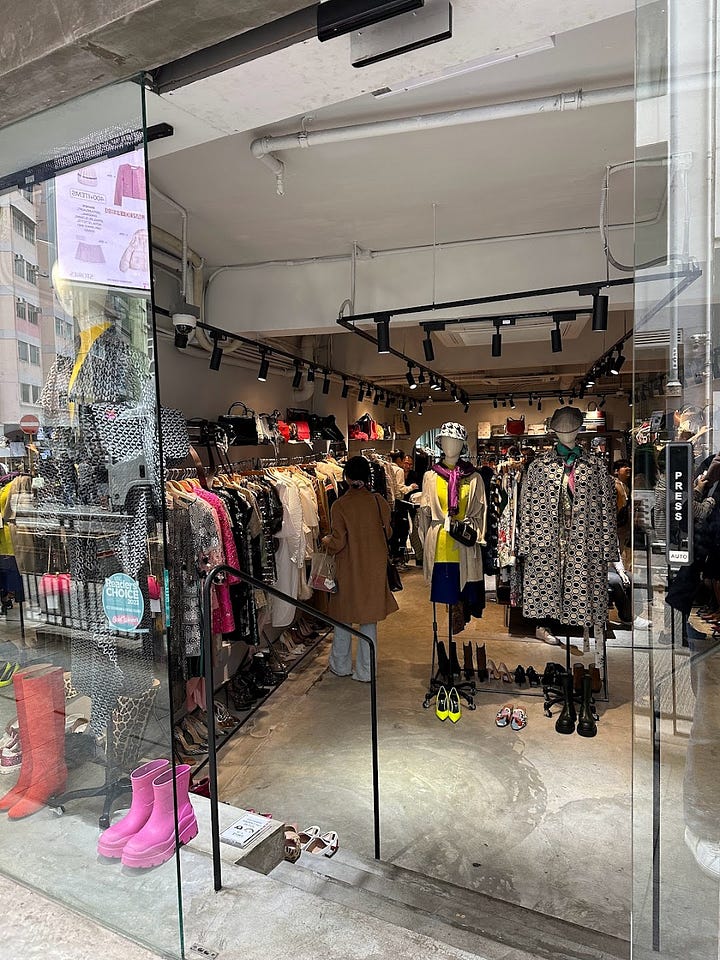
Kapok (various locations) - curated boutique shops stocking cool brands. I always want to buy something when I walk in.
Log On (various locations) - sells all manner of Japanese beauty, home and tech items.
Kibo (online) - brilliant local brand that makes the MOST comfortable stylish recycled leather trainers.
Sluggy (Causeway Bay/TST) - a fantastic local brand that allows you to customise their branded canvas tote bags, aprons and oven gloves with an array of adorable iron-on patches.
Markets & shopping streets:
Yuen Po Street Bird and Flower Market (Prince Edward) - locals take their pet songbirds for “walks” by bringing their cages out to this park and hanging them above their table whilst they drink tea with like-minded bird keepers underneath.
Goldfish Street (Mong Kok) - all manner of pets (mostly reptiles and fish) are sold along this street. Whilst this makes for a fascinating visit, it is difficult to overlook the less-than-satisfactory animal care practices, especially when it comes to the display of impossibly tiny dogs and cats in shop windows.
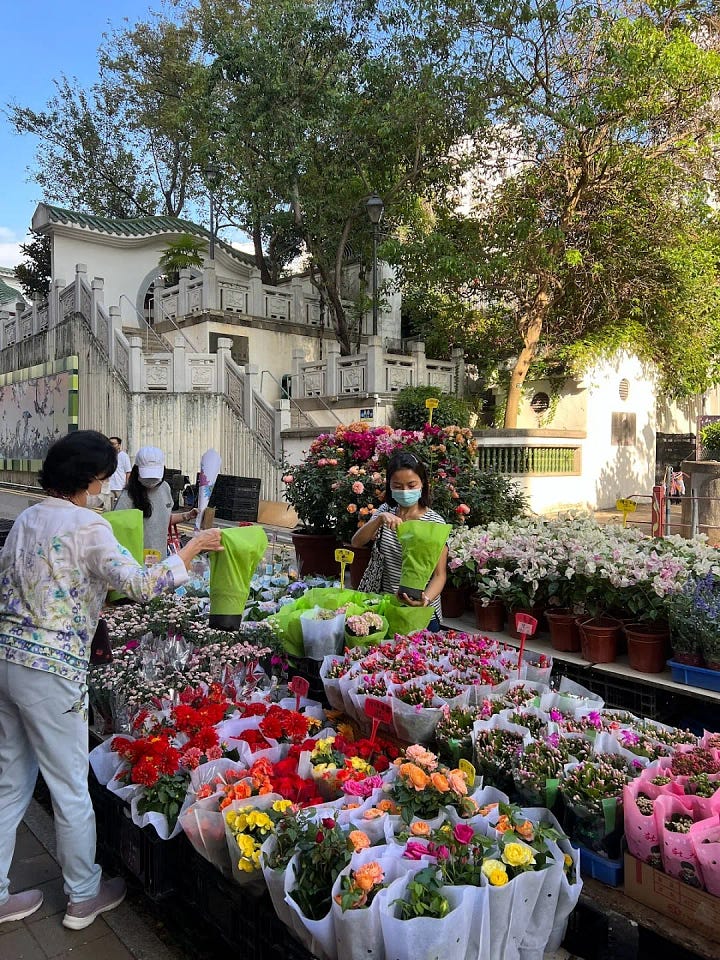
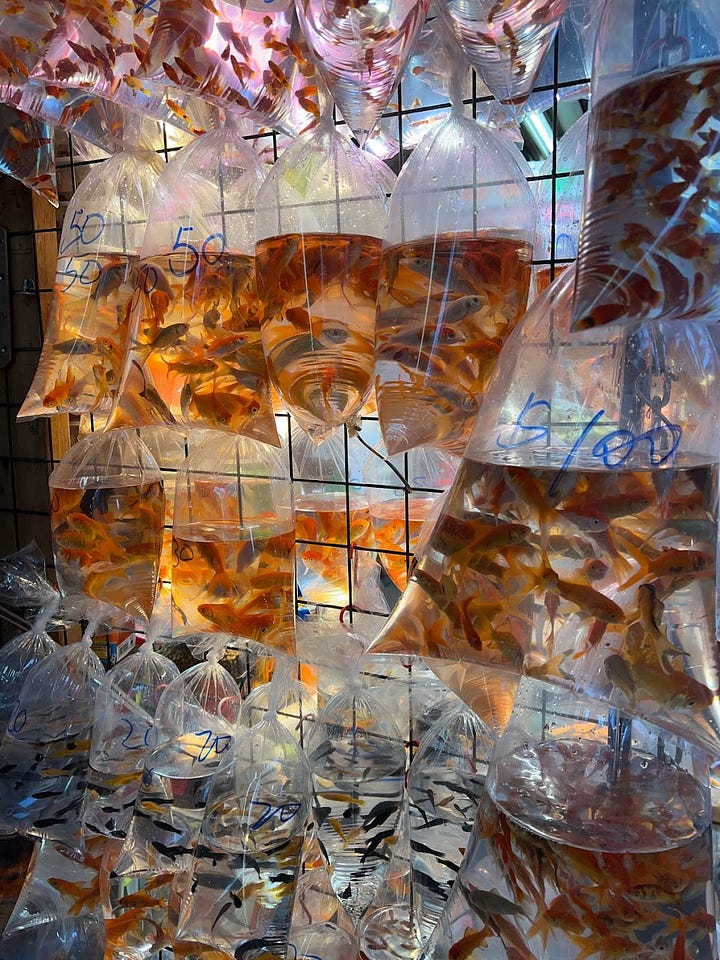
Sneakers Street (Mong Kok) - don’t go anywhere else if you want to pick up a new pair of (authentic) trainers! The shops here often stock models that are sold out elsewhere.
Ladies Market (Mong Kok) - the infamous street market for dirt cheap counterfeit goods.
Temple Street Night Market (Jordan) - street food, souvenirs, guff & garb aplenty.
Central Market (Central) - indoor market with a variety of street food stalls and boutique shops.
Outdoor activities & days out:
Dragon’s Back* - one of Hong Kong’s best hikes, and it’s not too strenuous.
Red Incense Burner Summit* - an amazing vantage point of both the HK Island and Kowloon skyline which can be reached via multiple different trails (the one we followed is linked). Very popular at sunset.
Ocean Park* - wins over Disneyland, any day. Many happy childhood summers were spent here. Don’t miss the pandas!
Ngong Ping* - as well as the aforementioned monastery / giant Buddha, you have the cable car ride over blue waters, the adorable tourist village and the scenic Wisdom Path trail - what’s not to love?

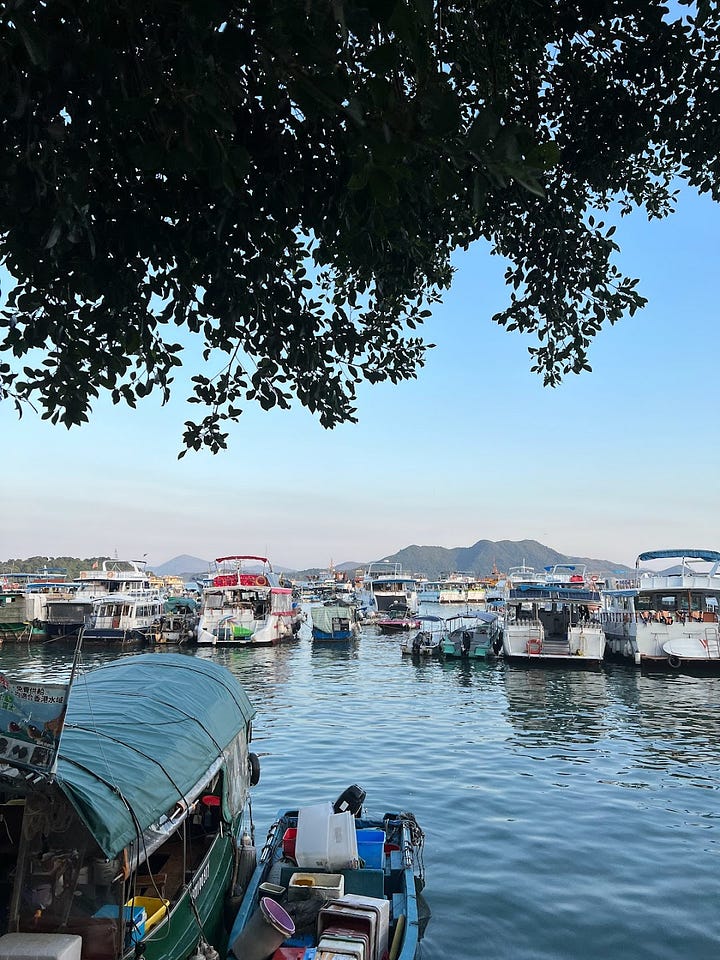
Sai Kung - gateway to hiker paradise, famous for its seafood restaurants and idyllic town centre by the waterfront. You can also take a boat to Sharp Island from here, which is part of Hong Kong’s UNESCO Geopark!
Wakeboard / wakesurf - A fun (but undoubtedly exhausting for beginners) activity for a sunny day - there’s nothing quite like being dragged at high speed across the idyllic waters of Tai Tam.
Shing Mun River - the cycling path along the river starts in Sha Tin and ends in Tai Mei Tuk. It takes about 2.5-3 hours and is very easy, safe and scenic. Many bike rental shops in Sha Tin allow you to drop off your bike in Tai Mei Tuk. A great way to see a different side to Hong Kong.
Tseung Kwan O Promenade - a dedicated cycling track takes you all around the waterfront in this picturesque residential neighbourhood. Super easy and perfect for families.
See a suggested scenic route map here.
We rented a bike from Biba QQ but wouldn’t necessarily recommend - Tokyo Bike appears to have much better reviews but is weekends only.
Scenic views:
Avenue of Stars* (TST) - Hong Kong’s much smaller version of Hollywood’s Walk of Fame, but the real reason to come is to enjoy the unparalleled waterfront view of Hong Kong Island’s skyline, especially at night when the buildings are illuminated.
The Peak* (Central) - you can either take the tram or hike up to see the iconic view of Hong Kong from above. Best at night.
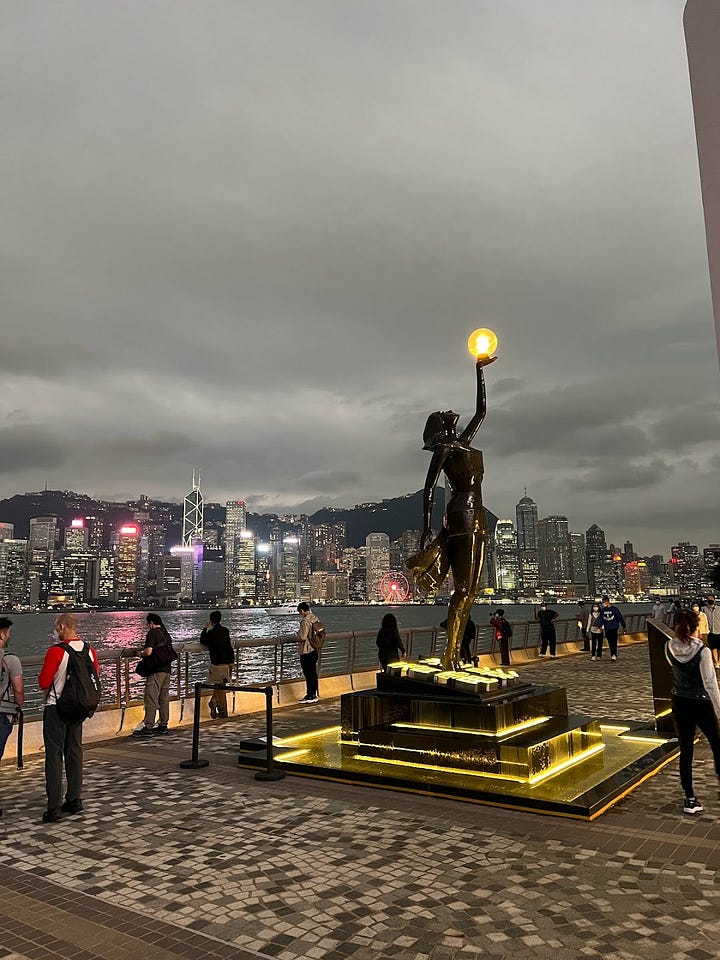
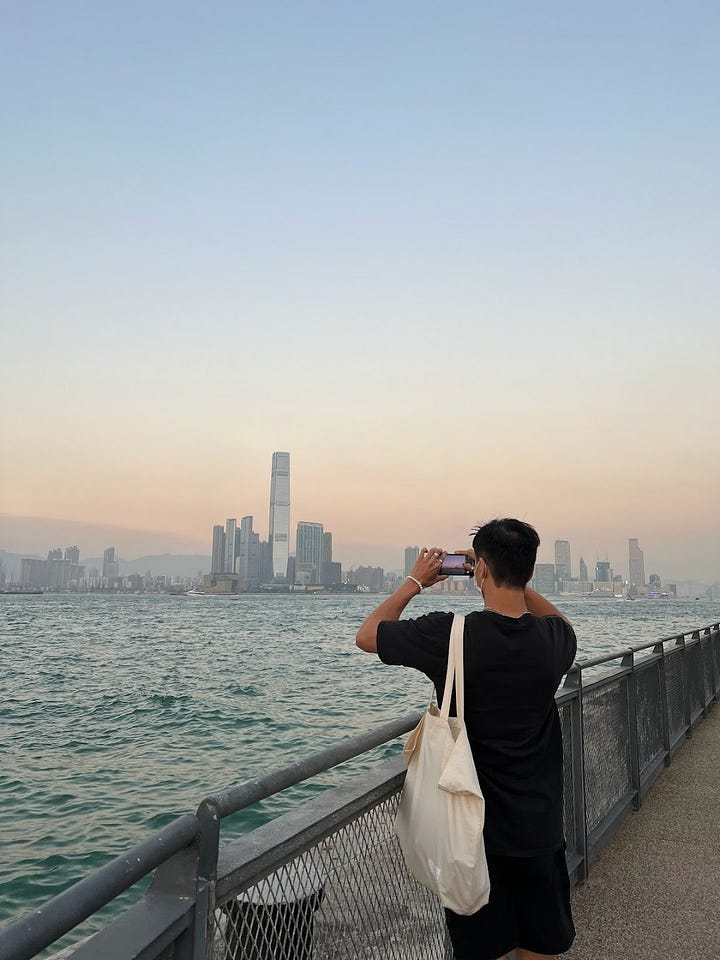
Star Ferry (Central/TST) - before the Cross-Harbour tunnel was built, this was the only way to get across the harbour to / from Kowloon. Best at night going from Tsim Sha Tsui to Central.
Central and Western District Promenade (Central) - stretches across the eastern width of the island and joins onto the Wan Chai Promenade to offer stellar views of both the Kowloon and Hong Kong Island skylines. A favourite with joggers, especially at night.
Belcher Bay Promenade (Kennedy Town) - another favourite with local runners.
Areas to explore:
West Kowloon Cultural District* - home to the Palace Museum and M+. This recently developed area is a haven for dog walkers, picnickers and families on a sunny day.
Soho / Poho* - Soho is a hilly area above Central which is full of independent shops, art galleries and hip eateries. Go into adjoining Poho to visit the Man Mo Temple and scour antique shops. I could spend a whole day exploring these two areas alone.
Starstreet Precinct - Sun, Star and Moon Streets form an absolute gem of a neighbourhood above Wan Chai, filled with aesthetic cafes and shops. Worth the climb up - go before people discover it!
Mong Kok - all the markets I listed above are around here. It is sensory overload in the best way.
Tai Hang - a hip, residential neighbourhood becoming well known for its collection of independent coffee shops.
Lee Tung Avenue - gorgeous pedestrianised street lined with shops and cafes. The surrounding area is also worth exploring - it’s an underrated food paradise.
Massage:
The perfect way to unwind after a long day on your feet. Be warned - Chinese reflexology is the “it hurts so good” type of massage which will have you writhing on the bed at times. Prices are generally cheaper in Kowloon than on the island.
Tai Pan Reflexology Parlour (TST) - retro themed atmosphere, great value for money.
Yuen Massage (Mong Kok) - clean and peaceful with skilled therapists.
Cave Spa & Massage (Kowloon City) - a serene haven with a more conventional (i.e. relaxing) approach to massage.
Foot Reflexology & Acupressure (Central) - slightly more expensive given its location, but the therapists here are highly skilled and the environment is wonderfully tranquil.
This guide will be updated with subsequent visits to Hong Kong, so keep an eye out for new additions. Fellow Hong Kongers - if you have any suggestions for places to add, do leave a comment below!




